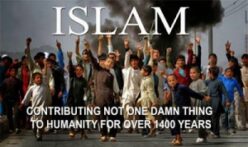Example: “hate speech is excluded from protection. dont [sic] just say you love the constitution . . . read it.” CNN Anchor Chris Cuomo, on Twitter, February 6, 2015.
Example: “I do not know if American courts would find much of what Charlie Hebdo does to be hate speech unprotected by the Constitution, but I know—hope?—that most Americans would.” Edward Schumacher-Matos, NPR, February 6, 2015.In the United States, “hate speech” is an argumentative rhetorical category, not a legal one.
“Hate speech” means many things to many Americans. There’s no widely accepted legal definition in American law. More importantly, as Professor Eugene Volokh explains conclusively, there is no “hate speech” exception to the First Amendment. Americans are free to impose social consequences on ugly speech, but the government is not free to impose official sanctions upon it. In other words, even if the phrase “hate speech” had a recognized legal definition, it would still not carry legal consequences.
This is not a close or ambiguous question of law.
When the media frames a free speech story as an inquiry into whether something is “hate speech,” it’s asking a question of morals or taste poorly disguised as a question of law. It’s the equivalent of asking “is this speech rude?”
source: Popehat
